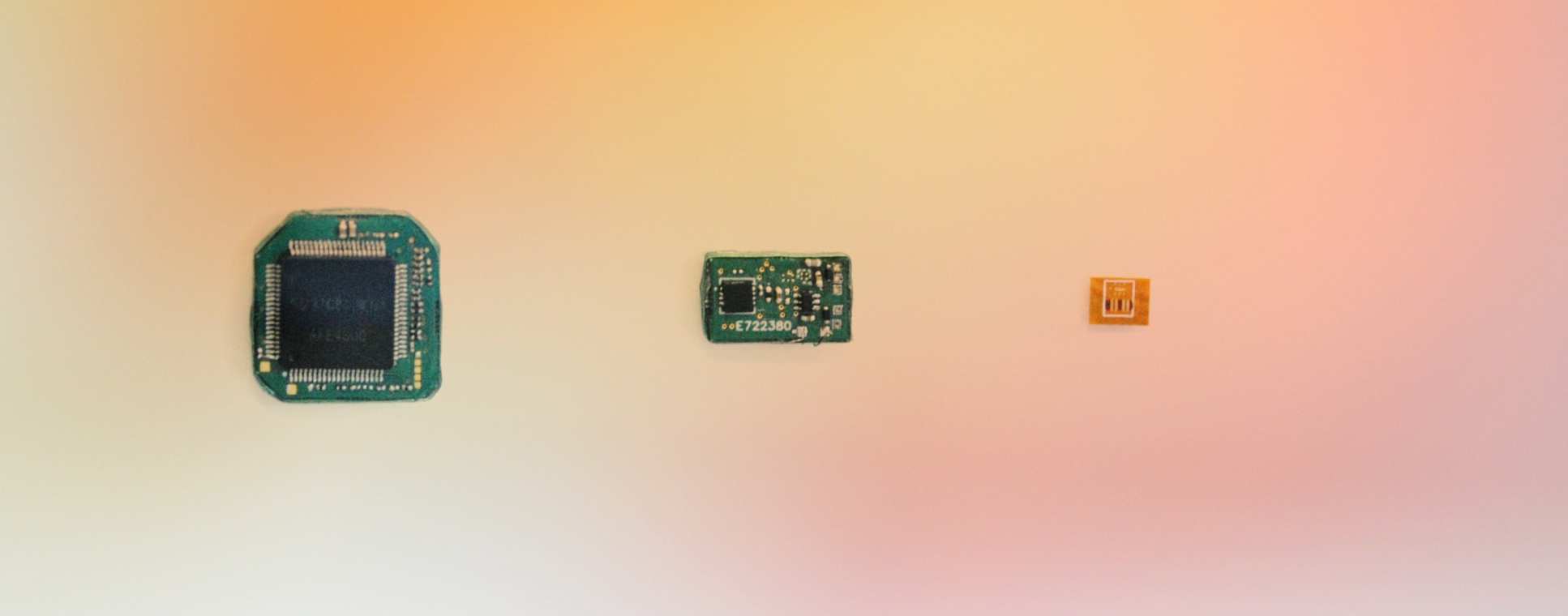Surgical Implants

One of the major focuses of the Hamlyn Centre is the development of miniaturised sensors embodied either as smart surgical appliances or implants to enhance the safety of surgical procedures, minimise post-operative complication, avoid re-admission, and enhance patient recovery and quality of life. For surgical implants, an example research area is in the management of deep-seated infections and sepsis secondary to anastomotic leak, which remain as significant complications associated with a number of surgical procedures. Other applications include monitoring of acute and chronic graft rejection following transplantation and assessment of subject-specific responses to chemo- and radiotherapy for cancer patients.
By using “the body as the medium and a source of inspiration and energy to provide long-term, continuous sensing, monitoring and intervention,” our work is directed towards the development of miniaturised, bio-integrable sensor platforms that are secure, ultra-low power, and with minimal drift. It builds on extensive complementary experiences of the team in sensing for healthcare with a strong emphasis on technological innovation and clinical translation, by following our drive “from sensor to real-time information, to clinical knowledge and stratified patient management”.
Some of our latest works were exhibited at the 2015 Royal Society Summer Science Exhibition.
Research themes
Research Themes
Implantable sensor design
Biofouling and sensor drift are two of the main challenges in the development of in vivo sensors. This research theme aims to tackle the main sensing requirements of implantable sensors by addressing issues related to response drift and calibration via direct and indirect sensing targets, and multimodal and multi- sensory integration. The main effort of this research theme is also directed to the development of miniaturised spectroscopy platforms that can be integrated with surgical appliances, e.g., surgical drains, catheters, and ports that are already integral to the established post-surgical care workflow.
Sensor miniaturisation and packaging
This is to address in vivo challenges of sensor embodiment and deployment, particularly for surgical implants. Specific focuses include deep implantation without the need for in-body wiring to near-surface interfaces by developing remote activation and interrogation methods, improving the ease of deployment and physical stability of devices through hybrid integration of novel and established materials, as well as miniaturisation and novel 3D packaging/system-on-a-chip technologies for integrated sensing and on-node processing.
Ultra-low power ASIC and microelectronics
Miniaturised implantable sensors require intelligent on-node processing to mitigate against bio-reaction and understand the context under which the sensing signals are derived such that active compensation schemes can be deployed to improve the intrinsic quality of the signals. This research theme is focussed on the development of on-node processing schemes that can be mapped directly to ultra- low-power ASICs with special consideration of resource-constraints and hardware versatility. It covers research issues ranging from on-node processing, ultra-low-power ASIC and microelectronics design, to energy harvesting/delivery and wireless connectivity.
Stratified patient management
The focus of this theme is to address critical barriers that must be overcome in order to translate new sensor measurements into useful clinical information by integrating with healthcare informatics and clinical decision support systems. Our current work is centred around three surgical exemplars for assessing tissue viability, surgical site infection, and tissue reconstruction failure. They are used to develop a model for stratified patient management and the use of the technologies in clinical settings.


